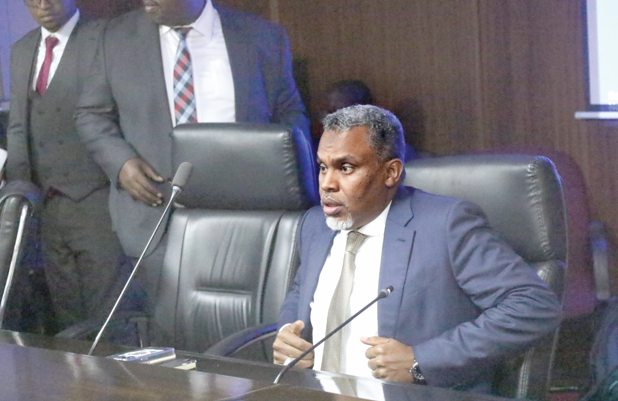NIS chief lists top threats to Kenya’s security

The National Intelligence Service (NIS) has painted a dire picture of Kenya’s security status, revealing critical threats from four of its five neighbouring countries.
During a presentation before the National Assembly’s Committee on Defense, Intelligence and Foreign Relations, NIS Director General Noordin Haji delivered a sobering assessment of the security situation.
He highlighted several key concerns, nearly becoming emotional as he outlined the challenges facing national security.
Military preparedness
Haji shocked lawmakers by revealing that the Kenya Defence Forces (KDF) have not upgraded their military equipment in over a decade, despite rapid technological advancements. The military’s outdated apparatus leaves Kenya vulnerable to emerging security threats across multiple borders.
Specifically, along the Uganda border, Karamajong warriors are not only perpetrating cattle rustling but have also encroached on Kenyan territory. The South Sudan border is plagued by a proliferation of small arms.
The Ethiopian border faces threats from the Oromo Liberation Army, which is allegedly collaborating with the outlawed Al-Shabaab and occupying parts of Kenyan land. The Somalia border also continues to be a critical front in the fight against al-Shabaab.
Regional instability
Haji warned of potentially catastrophic consequences if Ethiopia and South Sudan descend into anarchy. Kenya, given its strategic regional position, would bear the brunt of such instability. The ongoing conflict in Sudan between the Sudan Armed Forces (SAF) and the Rapid Support Forces (RSF) compounds the security challenges.
“There is no amount of money that can absolutely ensure Kenya’s safety,” Haji emphasised. “We are currently facing threats from nearly every neighbouring country save for Tanzania.”
Resource requirements
Haji outlined an ambitious plan to address these security challenges, requesting a substantial budget allocation of Sh33.5 billion. The proposed funding would support critical security infrastructure, including Sh10 billion for a new surveillance system with unmanned aerial vehicles and enhanced ground surveillance equipment, Sh15 billion for modernising the intelligence system, and Sh8.3 billion for research and development.
The NIS has already made significant progress, achieving about 70 per cent local content in its equipment procurement. This approach aims to develop indigenous solutions, particularly challenging as countries like China and the US have been reluctant to share advanced hardware.
Proactive approach
“Just like the way you change your [smartphones], it is the same with equipment,” he told lawmakers. “Whatever equipment we buy, they become obsolete or require upgrading.”
He added: “We have attained about 70 percent of local content because we want to have our own solutions. We need new equipment because of the ever-evolving threats that we are facing, especially from both al Shabaab and ISIS groups.”
Over the past two years, the NIS has worked to prevent bombings in Nairobi and block al Shabaab militants, despite significant losses among special operations personnel.
However, emerging global conflicts – including the Ukraine war, Gaza crisis, and Yemen conflict – have introduced new security concerns in Kenya.
Haji underscored that national security cannot be politicised. He said Kenya must invest in its defensive capabilities to preserve the freedoms Kenyans currently enjoy.
“The current security threat that we are facing is serious. Without security, you cannot enjoy this freedom that you are enjoying,” he said.
“It is sad that we do not see the need to appreciate where we are and we go out politicising everything. We are not going to overcome whatever we are facing.”
Budget considerations
The NIS budget has been dramatically reduced from Sh65.6 billion that was in the Budget Policy Statement to Sh51.47 billion in the 2025/2026 budget proposal, a cut of Sh14 billion.
Haji disclosed that his agency needs Sh33.5 billion for equipment that will aid in dealing with the current security challenges.








